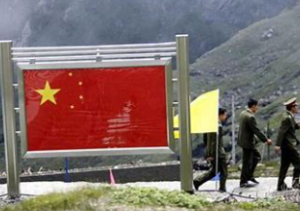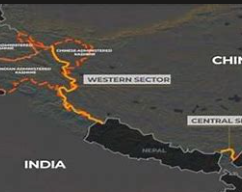In a recent turn of events, Chinese citizens have started to inhabit the “Xiaokang” model border defense villages that are scattered along India’s northeastern frontiers. These villages, which have been progressively appearing along the Line of Actual Control (LAC) since 2019, are now seeing an influx of new residents.
While the precise date isn’t mentioned, it’s reported that these developments started to surface around the middle of February 2024.
Enigma of the Ghost Villages
Over the past five years, China has been industriously constructing 628 of these so-called “prosperous villages” along the borders India shares with the Tibet Autonomous Region. This includes regions along Ladakh and Arunachal Pradesh. The exact purpose of these villages is still shrouded in mystery, but they are believed to serve a dual role – catering to both civilian and military needs. They also symbolize China’s territorial assertions along the LAC.
The Line of Actual Control (LAC) is a boundary that separates the territories controlled by India and China. It was first mentioned by Chinese Premier Zhou Enlai in 1959, but Indian Prime Minister Jawaharlal Nehru found the concept unclear. The LAC, which came into being after the 1962 Sino-Indian War, differs from the borders each country claims. It’s divided into three sectors: the western sector (Ladakh-Tibet/Xinjiang), the middle sector (Uttarakhand/Himachal Pradesh-Tibet), and the eastern sector (Arunachal Pradesh-Tibet), which generally follows the McMahon Line. Initially, the term “LAC” referred only to the western sector, but it expanded to the entire de facto border in the 1990s.
New Wave of Settlers
Recently, a wave of Chinese citizens has started to settle in these villages, which are located on China’s side of the LAC, facing the Lohit Valley and the Tawang sector of Arunachal Pradesh. The identities of these new settlers, whether they are ordinary civilians or military personnel, remain unconfirmed.
China’s infrastructure development along the LAC bordering the northeast is advancing at an impressive speed. As one official noted, “The Chinese have already built substantial infrastructure along the LAC at Tawang, but they’re not stopping there. Even in other areas such as Siang Valley of Arunachal Pradesh, we have been seeing rapid development of Chinese infrastructure.”
LAC Vibrant Villages Program
In parallel, India has also stepped up work on its border infrastructure — this includes improving forward connectivity, constructing alternate routes to the LAC as well as connecting them. Under the Vibrant Villages program, India plans to develop 663 border villages into modern villages with all amenities in the first phase.
Vigilance Against Espionage
The villages along the Line of Actual Control (LAC), occupied by Chinese nationals, looking back, there have been several instances where Chinese nationals have been found in places they shouldn’t be. For instance, some were discovered scuba diving near the rocket-launch site at the Kennedy Space Center in Florida. Others were
 caught swimming near an intelligence center in Key West, Florida, and snapping pictures. There was even a case where Chinese nationals tried to get past guards at Fort Wainright, Alaska, claiming they had a hotel reservation on the base. These incidents have been seen as potential acts of espionage.
caught swimming near an intelligence center in Key West, Florida, and snapping pictures. There was even a case where Chinese nationals tried to get past guards at Fort Wainright, Alaska, claiming they had a hotel reservation on the base. These incidents have been seen as potential acts of espionage.
These actions haven’t gone unnoticed. They’ve raised eyebrows internationally and are under the watchful eyes of global security agencies. It’s a reminder that in today’s interconnected world, vigilance is more important than ever.
Path Forward
As these previously uninhabited ‘defense villages’ begin to see an influx of residents, the situation along the LAC continues to be tense. This development has raised eyebrows in the global community and highlights the pressing need for an open and peaceful dialogue between the two nations. This move has sparked concerns among the global community and underscores the urgent need for open and peaceful dialogue between the two nations.











